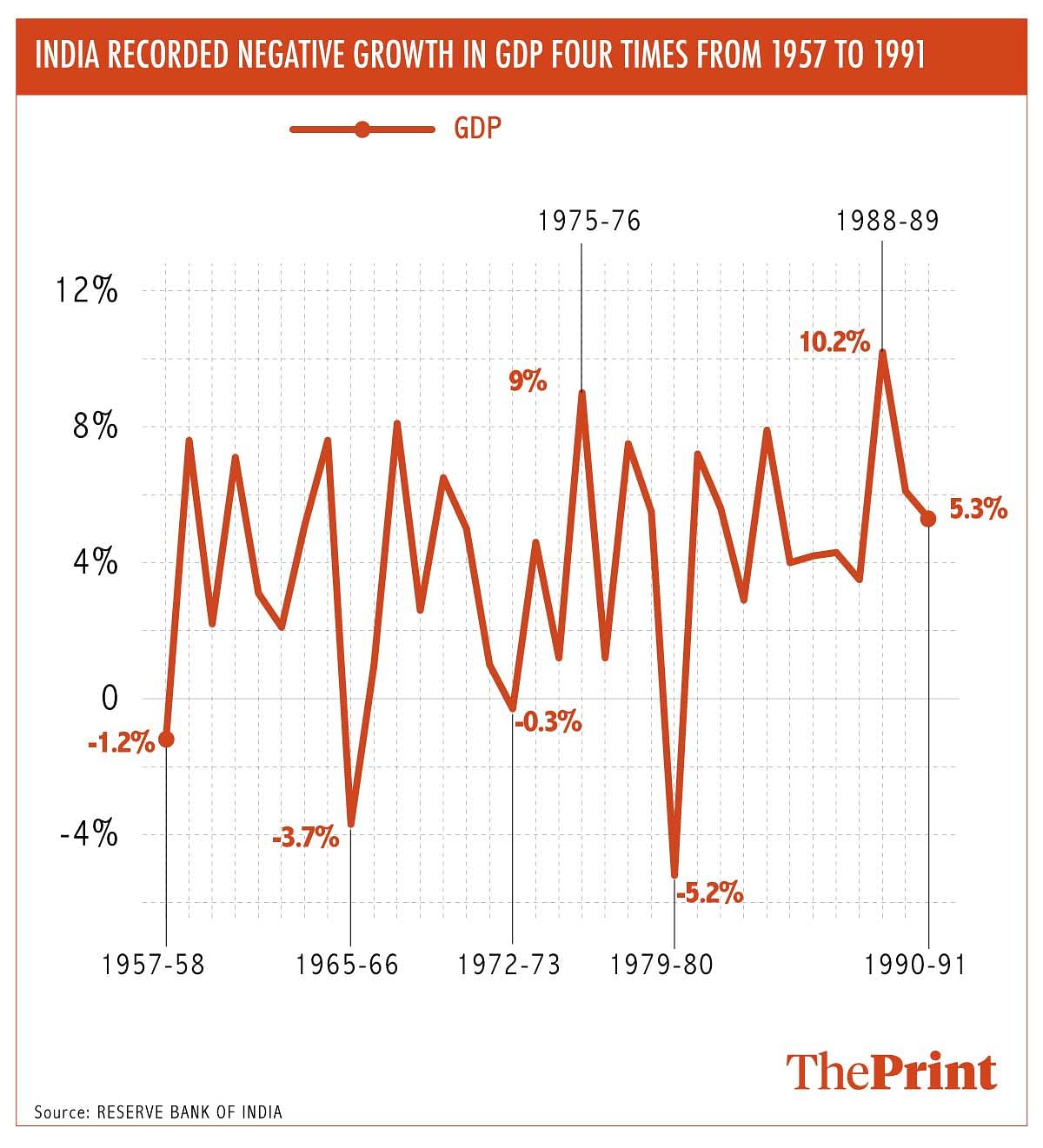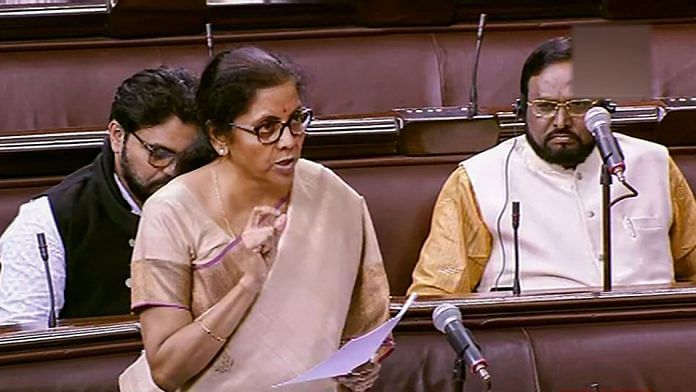New Delhi: Finance Minister Nirmala Sitharaman, in a debate on the state of the Indian economy in Parliament on 28 November, defended the Narendra Modi government, saying India is facing a slowdown but not a recession.
Sitharaman’s reference to ‘recession’ then started a discussion among economists and policy-makers on whether India is actually in the midst of a recession.
Former Reserve Bank of India governor Raghuram Rajan wrote in India Today last week that India is seeing a growth recession.
Former member of the Prime Minister’s Economic Advisory Council Rathin Roy said last week that India is in a recession and stressed the need for structural reforms.
As recession returns to economic discourse thanks to the repeated references from policy-makers, ThePrint explains what the term means.

What is a recession?
Recession indicates a decline in the overall economic activity. Typically, an economy is said to be in a recession when economic growth is negative for two consecutive quarters accompanied by a fall in income, sales and employment. However, this definition applies mainly for developed economies.
For emerging economies like India, economists say that recession can be categorised as a period of a downturn in the business cycle much below the previous trends and doesn’t necessarily need to be accompanied by negative growth rates.
If slow growth rates are accompanied by a rise in unemployment and fall in incomes, then the emerging market economy could be said to be in a recession.
Also read: Chhattisgarh CM Baghel’s advice to Nirmala Sitharaman — put money in common person’s pocket
When has India seen a recession?
From 1957 up to the pre-liberalisation period, India witnessed four years of an actual fall in output or negative growth in GDP. These were in the years 1957-58, 1965-66, 1972-73 and in 1979-80 when the economy grew at -1.2 per cent, -3.7 per cent, -0.3 per cent and -5.2 per cent, respectively.
These were mainly on account of either oil price shocks characterised by high oil prices or drought that led to a sharp fall in agricultural production or both.
However, economists contend that India has seen periods of recession in the post-liberalisation period without actually seeing negative GDP growth rates.
A 2017 paper by Radhika Pandey, Ila Patnaik and Ajay Shah of the National Institute of Public Finance and Policy points out that India had three periods of recession post-1991.
“The first recession was from 1999-Q4 to 2003-Q1; the second recession was from 2007-Q2 to 2009-Q3; and the third recession ran from 2011-Q2 till 2012-Q4,” the paper states.
The first bout of recession between 1999-2003 was in the aftermath of the Asian financial crisis that prompted the central bank to increase the repo rates to protect the rupee. This had an adverse impact on growth. The second recession was around the time of the global financial crisis of 2008 and the third recession between 2011 and 2012 was in the aftermath of the rapid rise in the country’s fiscal and current account deficit and a period of high inflation.
Many economists contend that the current contraction in manufacturing as seen by the GDP data for the July-September quarter, the fall in rural growth and the rising unemployment and falling incomes point towards a period of recession.
How long did it take India to bounce back from the recession?
Since the fall in output in the pre-liberalisation period was on account of one-off shocks, the economy managed to rebound quickly, recording positive growth rates in the next fiscal year itself. However, in the post-liberalisation period, the NIPFP paper found that recession, on an average, lasted nine quarters or 27 months.
Also read: Rahul Bajaj has actually done BJP a favour by bolstering its anti-business image






